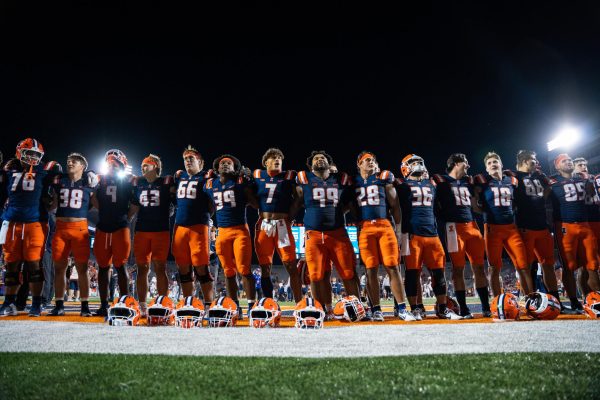Fighting more than fires
Apr 1, 2015
Last updated on May 8, 2016 at 10:55 a.m.
Former St. Joseph Fire Chief Rusty Chism began to notice shortness of breath in the summer of 2013. He thought it may have been related to his heart, but his doctor said it was working fine. They were, however, concerned with a dark spot that appeared just below his chest.
The dark spot turned out to be a tumor. He had thymus cancer, a rare form that affects the thymus, a small organ behind the breast bone surrounded by the heart, lungs and other major vessels. Doctors removed as much as they could.
Chism followed with chemotherapy and radiation, and by April 2014, he was declared cancer free. But just two months later, his health declined once again. The cancer was back and there wasn’t much that doctors could do. He participated in an experimental drug study through the National Institute of Health in Maryland before lesions appeared in his brain. Chism lost his battle in January 2015.
What remains unclear is if his cancer was related to fighting fires. Firefighters are much more susceptible to the disease due to burning materials releasing carcinogens.
Get The Daily Illini in your inbox!
To address this growth in firefighters’ risk of cancer, the Illinois Fire Service Institute will analyze how firefighters’ bodies are impacted in June in hopes of decreasing their cardiovascular and carcinogenic risks.
The IFSI received a Fire Prevention and Safety grant from the Department of Homeland Security to fund the project.
The organization is partnering with the National Institute for Occupational Safety and Health (NIOSH) and Underwriters Laboratories, an independent global safety science company, for their research. Gavin Horn, IFSI research program director, said the two groups will aid them as they look at how fires grow and spread and what is produced in them.
Horn said this will be the first time that test fires will evaluate how firefighters’ bodies are affected on the job.
“The fuel loads in buildings now are much different than what they were 40, 50 years ago because there’s a lot more plastic and additives to those plastics as opposed to the natural materials like wood, cotton, horse hair, wool,” Horn said.
People from around the country in cities such as Los Angeles, Chicago and Atlanta will help with the study.
Brian Nightlinger, Urbana fire chief,said some of Urbana’s firefighters hope to participate.
Nightlinger said the rise of cancers for firefighters hits close to home as Chism was also a division chief for Urbana’s department. Nightlinger said Chism was dedicated to fire service and helped many people, including kids that were interested in becoming firefighters.
“He was a supporter of kids and people in general in his community,” Nightlinger said. “Rusty was the kind of guy who if he saw something that needed to be done, he did it.”
Denise Smith, co-principal investigator, is working with Horn and others to design and conduct the study.
“Recently, we have shown that firefighting increases blood-clotting potential,” Smith said. “The project we are undertaking now will extend that research.”
Smith also said that approximately half of all firefighter line of duty deaths are due to sudden cardiac events, which is why the research is so important.
Firefighters, however, aren’t just at risk while they are fighting; the dangers persist long after they leave the scene.
Horn said one of the main problems is that after firefighting, many chemicals remain on their personal protective equipment.
He said this equipment is hung in the station where chemicals can be breathed in by firefighters.
“The gear that we have works very well in terms of protection, but it’s not perfect … there are certain areas that don’t have as much protection as others, particularly around the head and neck,” Horn said.
In other parts of the country, 85 percent of fire departments are all or mostly volunteers, Horn said. He said many leave their equipment in their car or by their bed, where they are constantly breathing in chemicals.
“There are some places that basically after (a) fire is done, the gear doesn’t even go back to the station,” Horn said. “It immediately goes to a laundry facility.”
Horn explained that without a national fire service, local departments have to make their own decisions.
For instance, the Urbana Fire Department implements safety by limiting the time firefighters are in a burning building and sending them to a “rehab” session, Nightlinger said.
“There is a very strong willingness to make changes if it is going to improve health and safety in the fire service,” Horn said. “What we’re trying to do is provide evidence that will help them make those changes, and in some cases, those changes are not cheap, and we need to be able to justify why this is important to make that change in terms of risks.”
As their research moves forward, Horn said they have to focus on making sure firefighters are safe and able to continue their work.
“There’s a term in the fire service industry: We talk about putting the rig back in service. So after we go to a fire and take everything off — pulling the hose, taking the tools off, ladders — what we have to do is put that rig back into service,” Horn said. “What we’re hoping to be able to start the conversation on here is putting the firefighter back in service.”






